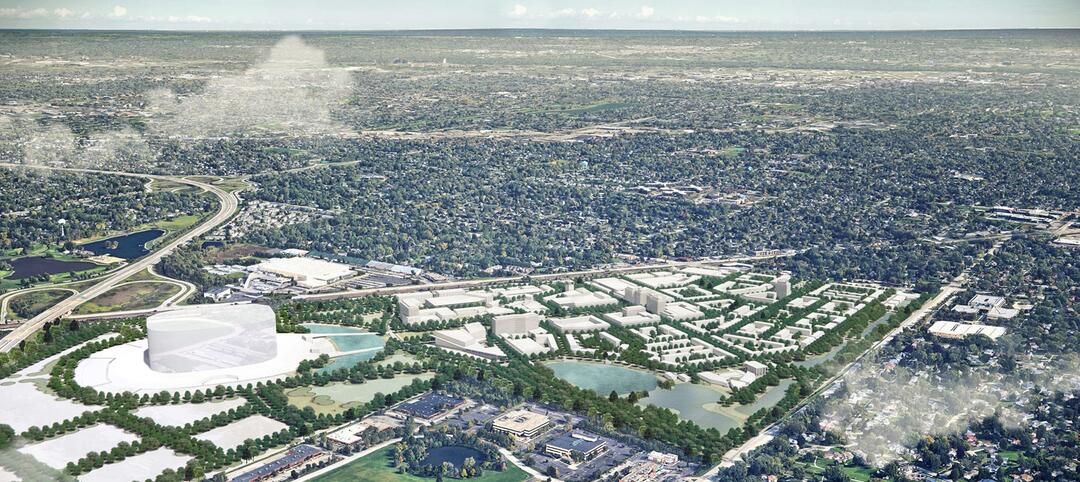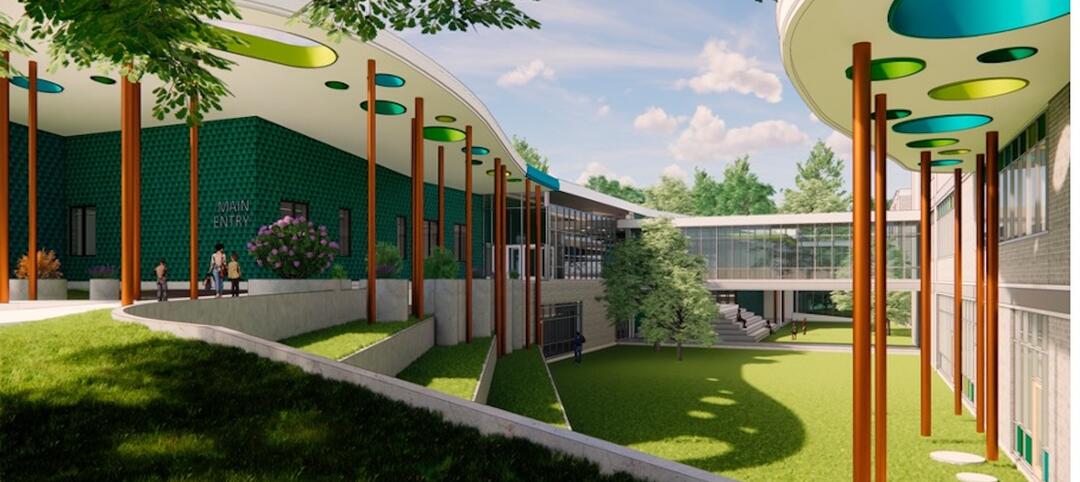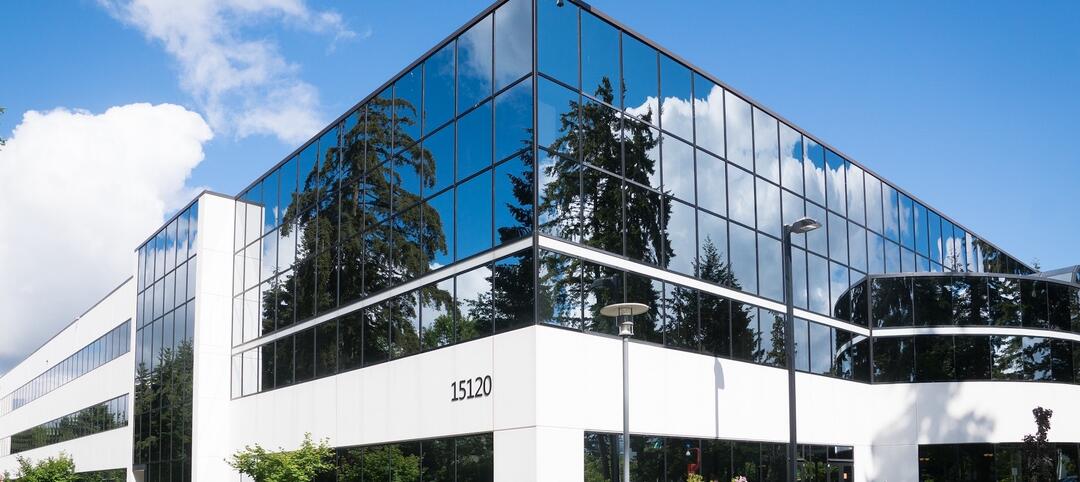With the Affordable Care Act still in its infancy, Building Teams are seeing reverberations in the investment decisions of healthcare providers, including new ideas about the types of buildings they are asked to create.
“To reduce costs, many hospitals, physicians’ groups, and healthcare systems are merging to eliminate duplication of operations,” says Kelly Altes, P.E., Project Executive for KJWW Engineering Consultants and a member of BD+C’s “40 Under 40” Class of 2014. “These and other trends are in many cases the result of the Affordable Care Act, which has providers focusing more than ever on patient experiences and outcomes, as well as outpatient services. This shift is resulting in a significant increase in medical office building and clinic construction and renovation projects.”
The latest version of the annual Hospital Construction Survey conducted by the American Society for Healthcare Engineering with Health Facilities Management magazine confirms this trend. The percentage of respondents planning medical office building expansions, completely new MOBs, neighborhood outpatient facilities and primary-care clinics, and ambulatory surgery centers were all up significantly. Meanwhile, 41% said the new regulatory environment makes it less likely that they’ll proceed with large new hospital construction projects.
TOP HEALTHCARE SECTOR ARCHITECTURE FIRMS
2013 Healthcare Revenue ($)
1 HDR $191,150,000
2 Stantec 126,523,841
3 HKS 113,904,765
4 CannonDesign 108,000,000
5 Perkins+will 96,663,046
6 HOK 92,185,580
7 NBBJ 85,544,000
8 Perkins Eastman 69,750,000
9 Hammel, Green and Abrahamson 66,036,440
10 SmithGroupJJR 58,159,528
SEE FULL LIST
TOP HEALTHCARE SECTOR ENGINEERING FIRMS
2013 Healthcare Revenue ($)
1 AECOM Technology Corp. $180,760,000
2 Jacobs 87,770,000
3 URS Corp. 45,036,525
4 Smith Seckman Reid 40,105,600
5 KPFF Consulting Engineers 38,000,000
6 Allen & Shariff 36,000,000
7 BR+A Consulting Engineers 29,900,000
8 Affiliated Engineers 27,947,000
9 CCRD Partners 23,760,000
10 Burns & McDonnell 19,810,000
SEE FULL LIST
TOP HEALTHCARE SECTOR CONSTRUCTION FIRMS
2013 Healthcare Revenue ($)
1 Turner Construction $2,001,060,000
2 McCarthy Holdings 1,738,000,000
3 Skanska USA 1,207,794,377
4 Brasfield & Gorrie 974,254,444
5 Clark Group 867,497,494
6 DPR Construction 806,488,333
7 PCL Construction 721,107,363
8 Whiting-Turner Contracting Co., The 720,455,505
9 JE Dunn Construction 700,315,855
10 Balfour Beatty US 469,422,190
SEE FULL LIST
With care models changing, medical office buildings increasingly provide services that were once the exclusive province of hospitals, from cancer care to emergency treatment to operations. According to Cushman & Wakefield, 80% of surgeries can successfully be completed in an ambulatory setting.
Giants 300 coverage of Healthcare brought to you by DuPont www.fluidapplied.tyvek.com
By moving these procedures away from large hospital campuses—which are often landlocked with little room for expansion—the volume of patients requiring the hospital is reduced, making way for patients with more complex needs. Since many off-campus MOBs are part of a network associated with a larger hospital, patients who end up needing more advanced care can simply transition to the main campus.
Locations of new MOBs are carefully considered, with developers opting to place them near shopping, restaurants, major roads, and public transit. In the past, many retail centers were wary of making deals with medical tenants because of the overall stigma of having a healthcare provider near retail and dining. Retail developers also believed medical tenants wouldn’t produce attractive levels of revenue. However, some developers have decided that having healthcare tenants is better than no tenants at all.
In particular, medical groups have made good use of large spaces vacated by defunct retail franchises, both stand-alone and within malls. Kaiser Permanente recently opened a 32,000-sf MOB in Portland, Ore., via adaptive reuse of a Circuit City location the healthcare organization bought out of receivership in 2010. Minnesota’s HealthEast Care System has created clinics in St. Paul-area spaces once occupied by Borders, Gander Mountain, and eq-life retail stores.
New partnerships and development models
A Cushman & Wakefield investor survey on medical office buildings reports that many healthcare providers are now seeking to form joint ventures, often between for-profit and not-for-profit health systems. These partnerships may offer the for-profit business the name recognition of the nonprofit, and give the nonprofit access to the financial and physician resources of the for-profit. When smaller clinics partner with larger, better-funded hospitals, they can pool their resources to care for more patients.
A Jones Lang LaSalle report indicates that real estate investors are increasingly enthusiastic about the profit potential of MOBs. In 2013, 78% of MOB buyers and sellers were investors rather than developers or hospitals—a dramatic shift from 36% in 2012. Hospitals and healthcare providers still control 85% of healthcare real estate and are generally not interested in selling, leading to a tight property market, JLL says. The firm predicts that hospitals may be increasingly willing to reconsider leveraging under-used property assets, in light of strong investor interest in the sector.
Regulations transform hospital design
Though construction of big new hospitals has slowed, healthcare groups are still investing in updates to keep properties functional, safe, and competitive. A twist pointed out by the HFM/ASHE report: Obamacare’s “two-midnight rule,” whereby hospital stays lasting less than two midnights must be billed as outpatient services. Some hospitals are creating dedicated units for observation-status patients, a tactic that may reduce overall length of stay.
Private patient rooms are the new normal, typically flooded with natural light and richly equipped with accessibility features. New Facility Guidelines Institute recommendations for 2014 emphasize sterilization and infection control in both hospitals and outpatient facilities. Some clients are also debating pros and cons of “same-handed” layouts, wherein all patient rooms are similarly oriented, versus traditional “mirror” floorplans with back-to-back headwalls.
“To achieve desired healthcare outcomes, evidence-based design and Lean design are becoming increasingly critical tools to design facilities in ways that minimize patient stress, increase patient and staff safety, and improve staff effectiveness and quality of care,” Altes says. “As a result, we’re seeing increased attention on such things as the incorporation of natural elements; ‘family-centered’ spaces; single-bed, same-handed patient rooms; and decentralized materials management.”
Read BD+C's full 2014 Giants 300 Report
Related Stories
Giants 400 | Sep 8, 2022
Top 115 Hotel Sector Architecture + AE Firms for 2022
Gensler, WATG, HKS, and Stantec top the ranking of the nation's largest hotel and resort sector architecture and architecture/engineering (AE) firms for 2022, as reported in Building Design+Construction's 2022 Giants 400 Report.
Senior Living Design | Sep 8, 2022
What’s new with AQ: The top trends in active adult living
Today's 55-or-better buyers are ready to design their lives and their homes as they see fit. With so much growth on tap, builders and developers must stay apprised of trends related to home, environment, and culture of 55+ communities.
Sports and Recreational Facilities | Sep 8, 2022
Chicago Bears unveil preliminary master plan for suburban stadium district
As the 2022 NFL season kicks off, the league’s original franchise is fortifying plans to leave its landmark lakefront stadium for a multi-billion-dollar mixed-use stadium district in northwest suburban Arlington Heights.
| Sep 8, 2022
The Twin Cities’ LGBTQ health clinic moves into a new and improved facility
For more than 50 years, Family Tree Clinic has provided reproductive and sexual health services to underserved populations—from part of an old schoolhouse, until recently.
| Sep 8, 2022
U.S. construction costs expected to rise 14% year over year by close of 2022
Coldwell Banker Richard Ellis (CBRE) is forecasting a 14.1% year-on-year increase in U.S. construction costs by the close of 2022.
Giants 400 | Sep 7, 2022
Top 95 Industrial Sector Architecture + AE Firms for 2022
Ware Malcomb, Stantec, Haskell, and Macgregor Associates Architects top the ranking of the nation's largest industrial facility sector architecture and architecture/engineering (AE) firms for 2022, as reported in Building Design+Construction's 2022 Giants 400 Report.
| Sep 7, 2022
Use of GBCI building performance tools rapidly expanding
More than seven billion square feet of project space is now being tracked using Green Business Certification Inc.’s (GBCI’s) Arc performance platform.
| Sep 7, 2022
K-8 school will help students learn by conducting expeditions in their own communities
In August, SHP, an architecture, design, and engineering firm, broke ground on the new Peck Expeditionary Learning School in Greensboro, N.C. Guilford County Schools, one of the country’s 50 largest school districts, tapped SHP based on its track record of educational design.
| Sep 6, 2022
Herbert V. Kohler, Jr. (1939-2022) An incomparable spirit
Dynamic leader and Kohler Co. Executive Chairman Herbert Vollrath Kohler, Jr. passed away on September 3, 2022, in Kohler, Wisconsin.
| Sep 6, 2022
Demand for flexible workspace reaches all-time high
Demand for flexible workspace including coworking options has never been higher, according to a survey from Yardi Kube, a space management software provider that is part of Yardi Systems.


















